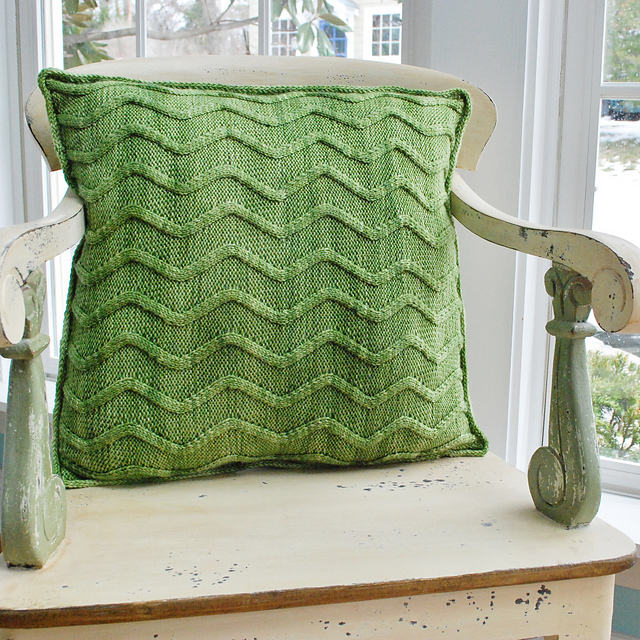Ziggurat by Susan Andrews
There is no question, chevron patterns are really popular right now for clothes, accessories, and projects for the home.
Ziggurat by Susan Andrews incorporates that pattern into a classic home dec staple - the pillow. The beautiful texture and the subtle color shifts lent to the pillow by the hand-dyed nature of the yarn make this a pillow that won't go out of style.
The finished size of the pillow is 20" x 20" (50 cm x 50 cm) and does require a pillow form. The pillow takes three skeins of Cricket; the sample here was knit in Pesto.
Susan chose Cricket primarily for the color. She also says that "the round plumpness of the yarn and the firmness of the way it is plied give the traveling cables just the right definition. A perfect choice yarn for any cable project. And then that bit of cashmere is sure a plus for any great knitted piece that will be near the skin." It's also a plus that Cricket is washable.
The Architectural Eye Candy set of patterns was designed as part of a project at The Studio in Kansas City to develop new home decor ideas. Susan says "it includes three patterns that all were inspired by an architectural element but were done in eye popping colors to refresh your look in your home."
If you can't get to The Studio, you can also get the ebook on Ravelry.
Visit our website to find a local or online Anzula retailer. If Cricket is not available at your LYS, you can place a special order through any store that carries Anzula.











